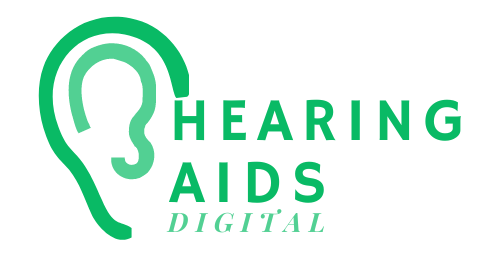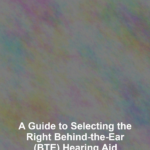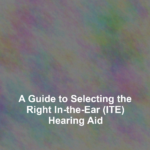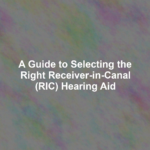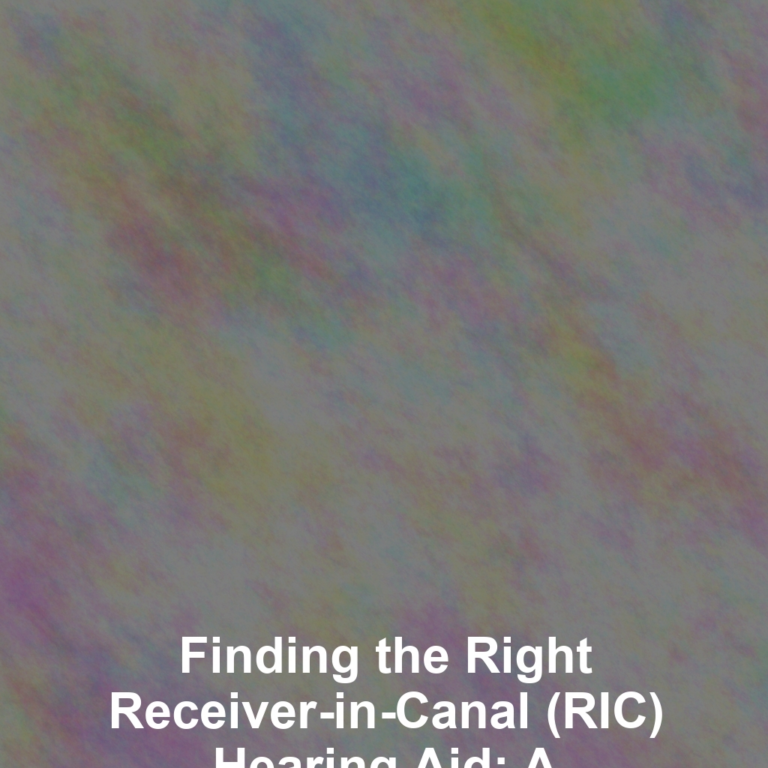Imagine the gentle rustling of leaves on a breezy day, a sound youG??ve struggled to hear clearly for yearsG??this could once again be a part of your world with the right hearing aid. YouG??re about to embark on a journey to reclaim the nuances of sound that youG??ve been missing.
In navigating the landscape of hearing aid technology, itG??s crucial to understand not only the extent of your hearing loss but also how the different types of hearing aids align with your personal lifestyle. As you weigh the pros and cons of various models and features, youG??ll also need to consider the importance of consulting a qualified audiologist.
In the following sections, youG??ll discover the key steps you should take to ensure that your choice not only enhances your hearing but also fits seamlessly into your daily life, promising a boost in your quality of life that you may not have realized was missing.
Understanding Hearing Loss
How well do you understand the complexities of hearing loss that affect your daily communication? ItG??s essential to grasp whatG??s happening when youG??re struggling to catch every word in a conversation. You see, hearing loss isnG??t just about volumeG??itG??s about clarity. You might hear someone speaking, but the words seem muffled, or you miss certain sounds, making it tough to follow along.
Imagine youG??re in a noisy room. For someone with normal hearing, the brain can often filter out background noise, letting conversations stand out. If youG??ve got hearing loss, your brain doesnG??t get all the details it needs to do that filtering effectively. ThatG??s why, even with amplification, you might still find it hard to understand someone at a party or a family dinner.
Different types of hearing loss require different solutions. Sensorineural hearing loss, the most common type, is often managed with hearing aids that amplify sounds. Conductive hearing loss might need medical treatment. And for some, a combination of both types means a more tailored approach is necessary.
Before you look for solutions, get a proper diagnosis. Knowing the specifics of your hearing loss can guide you to the right hearing aid, ensuring youG??re not just hearing more, but understanding more.
Types of Hearing Aids
Once you understand your hearing loss, itG??s time to explore the various hearing aid options that can enhance your daily interactions. YouG??ll find thereG??s a wide range of styles and features to consider. LetG??s break down the primary types:
-
Behind-The-Ear (BTE): BTE aids sit behind your ear and are connected to an ear mold or earpiece by a transparent tube. TheyG??re powerful and can be easier to handle, making them suitable for most types of hearing loss.
-
In-The-Ear (ITE): These devices fit entirely within the outer ear and are a bit more discreet. ITE aids can be easier to use with the phone and are often custom made to fit your ear shape.
-
In-The-Canal (ITC): ITC hearing aids are even smaller, fitting partly or completely into the ear canal. TheyG??re less visible and can be quite comfortable, but they may not have as many features due to their size.
-
Completely-In-Canal (CIC): For the ultimate in discretion, CIC models are the smallest and fit deeply within the ear canal. TheyG??re nearly invisible when worn, although their small size can make them tricky to adjust.
Each type has its advantages and potential drawbacks. ItG??s crucial you weigh them against your personal needs and lifestyle to find your perfect match.
Key Features to Consider
When selecting a hearing aid, itG??s essential to consider the features that will best suit your lifestyle and hearing needs. TodayG??s devices come packed with an array of options, but you donG??t need them all. Prioritize whatG??s crucial for you.
First, think about directional microphones. These are key for understanding speech in noisy environments because they focus on the sound coming from in front of you, reducing background noise. If youG??re often in bustling places, this feature is a must.
Another important feature is the telecoil or T-coil, which lets you connect your hearing aid directly to phone lines and assistive listening systems. This can dramatically improve your experience in theaters, churches, and other public venues equipped with a loop system.
Wireless connectivity is also worth considering. This allows your hearing aids to connect with smartphones, TVs, and other devices, enabling you to stream audio directly to your ears.
DonG??t overlook battery life. If youG??re always on the go, a longer-lasting battery or a rechargeable option might be best for you. Finally, consider automatic volume control, which adjusts the hearing aid volume depending on the noise level in your environment, making it easier to transition between settings.
Personal Lifestyle Considerations
While evaluating the technical features of hearing aids is crucial, itG??s equally important to consider how a device fits into your daily routine and personal activities. Your lifestyle plays a significant role in determining the kind of hearing aid thatG??ll serve you best. Here are some aspects you should consider:
-
Work Environment: If youG??re working in a noisy environment or need to attend frequent meetings, youG??ll want a hearing aid with advanced noise reduction and directional microphones.
-
Physical Activity: For those who lead an active lifestyle, features like sweat resistance and a secure fit are a must to ensure your hearing aid stays in place during workouts or outdoor activities.
-
Social Engagement: Are you often in social settings or enjoy theater and music? Look for hearing aids with connectivity options that can sync with audio systems or telecoil features for use in equipped venues.
-
Home Life: If you spend a lot of time at home, perhaps enjoying TV or conversations with family, simplicity and comfort may be your priority, with an emphasis on clear sound quality in quieter environments.
Finding a Qualified Audiologist
To ensure you receive the best possible guidance and hearing aid options, itG??s vital to find a qualified audiologist with the right expertise and credentials. Start by checking if theyG??re licensed in your state G?? this isnG??t just a formality; itG??s a requirement that confirms theyG??ve met specific educational and professional standards.
Look for an audiologist with a Doctor of Audiology (Au.D.) degree, as theyG??ve undergone extensive training in hearing disorders and hearing aid technology. DonG??t hesitate to ask about their experience, especially with your particular type of hearing loss. ItG??s also worth finding out if theyG??ve any specializations, like pediatric audiology or tinnitus management, if those are relevant to your situation.
YouG??ll want someone whoG??s up-to-date with the latest hearing aid advancements. Ask them about their continuing education G?? a good audiologist is always learning and staying current with new developments in the field.
Conclusion
YouG??ve explored the landscape of hearing aids, understanding your hearing loss, and the different types available. Now, focus on key features that align with your lifestyle.
DonG??t overlook the importance of a qualified audiologistG??theyG??re crucial in finding your perfect match.
Remember, the right hearing aid can vastly improve your life, so take your time and choose wisely.
With the right help and information, youG??re well on your way to clearer, richer sound.
